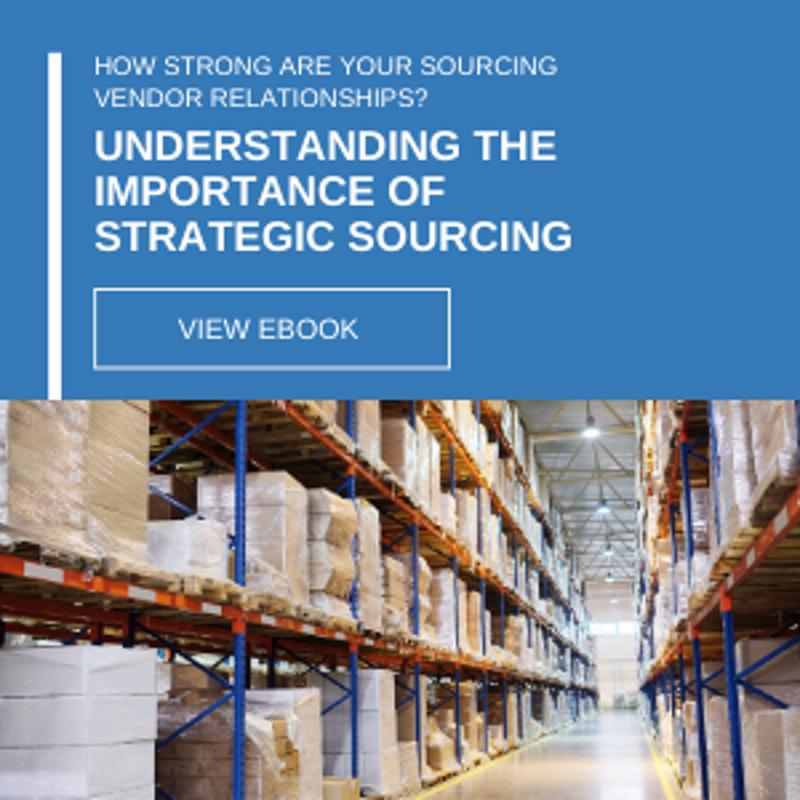-
Subscribe to Blog:
SEARCH THE BLOG
CATEGORIES
- Aerospace
- Asset Maintenance
- Automotive
- Blog
- Building Products
- Case Studies
- Chemical Processing
- Consulting
- Food & Beverage
- Forestry Products
- Hospitals & Healthcare
- Knowledge Transfer
- Lean Manufacturing
- Life Sciences
- Logistics
- Manufacturing
- Material Utilization
- Metals
- Mining
- News
- Office Politics
- Oil & Gas
- Plastics
- Private Equity
- Process Improvement
- Project Management
- Spend Management
- Supply Chain
- Uncategorized
- Utilities
- Whitepapers
BLOG ARCHIVES
- June 2025 (4)
- May 2025 (1)
- April 2025 (1)
- March 2025 (1)
- February 2025 (4)
- January 2025 (4)
- December 2024 (4)
- November 2024 (2)
- October 2024 (6)
- September 2024 (5)
- August 2024 (5)
- July 2024 (6)
- June 2024 (3)
- May 2024 (3)
- April 2024 (4)
- March 2024 (3)
- February 2024 (4)
- January 2024 (5)
- December 2023 (2)
- November 2023 (1)
- October 2023 (6)
- September 2023 (3)
- August 2023 (4)
- July 2023 (2)
- June 2023 (3)
- May 2023 (7)
- April 2023 (3)
- March 2023 (3)
- February 2023 (5)
- January 2023 (6)
- December 2022 (2)
- November 2022 (5)
- October 2022 (5)
- September 2022 (5)
- August 2022 (6)
- July 2022 (3)
- June 2022 (4)
- May 2022 (5)
- April 2022 (3)
- March 2022 (5)
- February 2022 (4)
- January 2022 (7)
- December 2021 (3)
- November 2021 (5)
- October 2021 (3)
- September 2021 (2)
- August 2021 (6)
- July 2021 (2)
- June 2021 (10)
- May 2021 (4)
- April 2021 (5)
- March 2021 (5)
- February 2021 (3)
- January 2021 (4)
- December 2020 (3)
- November 2020 (3)
- October 2020 (3)
- September 2020 (3)
- August 2020 (4)
- July 2020 (3)
- June 2020 (5)
- May 2020 (3)
- April 2020 (3)
- March 2020 (4)
- February 2020 (4)
- January 2020 (4)
- December 2019 (3)
- November 2019 (2)
- October 2019 (4)
- September 2019 (2)
- August 2019 (4)
- July 2019 (3)
- June 2019 (4)
- May 2019 (2)
- April 2019 (4)
- March 2019 (4)
- February 2019 (5)
- January 2019 (5)
- December 2018 (2)
- November 2018 (2)
- October 2018 (5)
- September 2018 (4)
- August 2018 (3)
- July 2018 (2)
- June 2018 (4)
- May 2018 (3)
- April 2018 (3)
- March 2018 (2)
- February 2018 (2)
- January 2018 (1)
- December 2017 (1)
- November 2017 (2)
- October 2017 (2)
- September 2017 (1)
- August 2017 (2)
- July 2017 (2)
- June 2017 (1)
- April 2017 (3)
- March 2017 (3)
- February 2017 (2)
- January 2017 (2)
- December 2016 (2)
- November 2016 (4)
- October 2016 (4)
- September 2016 (3)
- August 2016 (6)
- July 2016 (4)
- June 2016 (4)
- May 2016 (1)
- April 2016 (3)
- March 2016 (4)
- February 2016 (2)
- January 2016 (4)
- December 2015 (3)
- November 2015 (3)
- October 2015 (1)
- September 2015 (1)
- August 2015 (4)
- July 2015 (6)
- June 2015 (4)
- May 2015 (7)
- April 2015 (6)
- March 2015 (6)
- February 2015 (4)
- January 2015 (3)
CONNECT WITH US
Tag Archives: Consumer Demand
If you’re in the metals industry, you don’t need us to tell you what your challenges are. You’re living them every day, whether it’s your supply chain, the ability to keep up with increasing demand, operating inefficiencies or COVID turning the world upside down. While these may be common, across-the-board challenges, no two companies in the metals industry are being affected by the same issues in exactly the same way.
That’s why we are not a cookie-cutter consulting firm.
When companies come to us, 9 times out of 10, they already have a pretty good idea of the challenges across their company workflows. Most are looking to us to help break bottlenecks in their operation, find ways we can help them do more with what they have, and many times, do more with less.
We roll up our sleeves and work with you to find the hidden opportunities within your operation that will allow you to minimize or eliminate bottlenecks leading to greater efficiency.
Download our eBook Challenges for the Metals Industry: How USC Consulting Group Can Help to learn the strategies USC is applying to help our clients overcome obstacles, like:
- COVID-19 safety protocol challenges
- Supply chain disruptions
- Demand management decisions
- Excessive cycle time or time for changeovers
- Fluctuating inventory
- Supplier uncertainty
We will help you find hidden opportunities to bolster your operational efficiency.
If you are experiencing any of these challenges in your operations and would like to consult with our team about your specific issues, contact us today.
It is difficult to put into exact figures the effects the coronavirus pandemic has had on global industry. However, with manufacturers and supply chains across the world reeling with the ongoing problems the pandemic has presented, we are seeing a definite shift in the ways business is conducted.
Overall, factory shutdown and manufacturing delays have shrunk foreign direct investment by 5-15%, as global trade and supply is interrupted. But some businesses and industries—like toilet tissue, hand soaps and sanitizers, and face mask manufacturers—are experiencing a heavy increase in demand.
So how are these businesses coping with potential delays or limited access to materials? What does this global shift mean for manufacturers and supply chain managers of products that are especially high in demand?
Manufacturing
Manufacturers in high demand during the pandemic must devise unique solutions to meet customer satisfaction while protecting employees. While these solutions are different for every industry, how paper products and food services are adjusting are a good indicator of common trends.
Paper companies have seen a 20% increase in orders during the pandemic, with worried individuals stocking up on products like toilet tissue for fear of being stuck inside without it. Additionally, the increased number of individuals either unemployed or working from home means more business for household toiletry and paper products. This means factories already operating on a 24/7 basis have had to increase production, hire on more workers, and buy out more materials, all while maintaining COVID safety recommendations.
Without maintaining employee safety, factories put themselves at risk of shutting down. This is especially vital in the foodservice industry, where workers have to constantly manage risks with shifting inventories.
Food and beverage companies are reevaluating their processes to maintain supply amidst high demand and limited access to materials. Coca-Cola, for instance, has experienced interruptions in shipments of certain sugar alternatives because of the pandemic. Usually, they acquired many of these materials from China, but the difficulties in trade amidst economic shutdowns and transportation complications have made international supply chains difficult to manage.

Photo by Olenka Sergienko from Pexels
As a result, manufacturers are shifting to domestic sources. According to a recent survey, 64% of manufacturers believe reshoring is likely, meaning a return to domestic sources of materials and assemblage. This domestic trend can help manage manufacturers and supply chain needs for high-demand products, but the effect on foreign economies will be felt for a long time to come.
Supply Chain Management
Supply chains require vast amounts of data, mapping, and planning for successful, seamless functioning. In light of the pandemic, those that already had a sufficient map of supplier sites had a better understanding of where delays could be anticipated. But data is key here, and it has been the focus of a shift for manufacturers both experiencing increased demand and those that have not.
Supply chains are essential to the transportation and costs of goods, both for manufacturer and consumer. Every aspect of customer satisfaction and good business relies on an effective supply chain, and the coronavirus has impeded supply chains worldwide.
Because of this, industries with high demand are more reliant than ever on the effective mapping of suppliers and the use of data. They need constant, reliable resources to meet demand, and only the best information can assist in this endeavor.
This often means a digital mapping system on top of a “nomadic sourcing” strategy for the long term. Businesses have to adjust their suppliers depending on where they can effectively acquire materials. For example, if a recent outbreak has shut down a factory that makes a specific part needed for another manufacturer’s product, a back-up location must be mapped out and ties created.

Some businesses are adopting these strategies and back-ups now, amid the pandemic, while others were already more prepared with such strategies. Regardless, the emphasis on information and digital tools is creating a shift in the world of supply chain management, where big data and AI tech is increasingly being adopted.
As a result of this shift, the concerns of cyber-attacks are more prevalent than ever. In the digital world made necessary by COVID-19, cybersecurity is a vital element of supply chain management, especially for those providing products in high demand. Data can be highly valuable for hackers and the current 4 million-person shortage in the field of cybersecurity, according to the University of North Dakota, makes for a dangerous landscape for supply chains.
As the industry shifts, digital mapping, nomadic sourcing, and cybersecurity are all central focuses for supply chains managing high-demand products.
A Changing World Amidst the Pandemic
Manufacturers and supply chain managers are having to adjust on the fly to the challenges of a global pandemic, and that means shifting policies and procedures. From integrating safety and social distancing measures to protecting employees to ramping up production and domestic sourcing, modern business is adjusting to high-demand and plotting supply chains with advanced digital all in a challenging environment.
These trends will likely continue for years to come, with the reverberations felt across a wide variety of industries. In manufacturing and shipping, these changes may make for increased awareness and control over materials and supply chains, but only time will tell what the full effects of the pandemic will be on global trade at large.
This article is written by guest author Beau Peters. View more of Beau’s articles here.
There are many phrases that come to mind when one thinks of the coronavirus pandemic: terms like “social distancing,” “new normal,” and “flatten the curve” are just a small handful.
Yet for business leaders – especially manufacturers and shippers – the words “unpredictability” and “uncertainty” will likely epitomize 2020, as they’re something organizations continue to experience as the country and consumers emerge from the nationwide lockdown amid supply chain disruption.
“A majority said [the biggest pain point] was the unpredictability of consumer demand.”
In a recent survey conducted jointly by CalAmp and Reuters Events, industry respondents were asked to name the biggest pain point they experienced as it pertained to their supply chains. Of the nearly 800 individuals that took part in the poll – a combination of shippers and supply chain execs – the majority said it was the unpredictability of consumer demand. More specifically, 51% considered it the most significant supply chain disruption, more so than the inbound flow of goods from suppliers (33%) and difficulties with getting shipment to paying customers (16%).
The white paper, which was released as a supplement to the survey, noted that the pandemic proved to be unusual in many ways, but most especially in terms of the fluctuations in what consumers wanted and to what degree.
“The pandemic has introduced unexpected volatility into customer demand, making it even more difficult to discern demand patterns,” the report stated, as quoted by Supply Chain Dive. “Furthermore, silos between sales and operations has hindered data-sharing, which would have proven useful in navigating these issues.”
Manufacturers experience supply chain disruption
April proved to be a particularly harsh stretch for manufacturers, a month many would point to as the height of the crisis. On a seasonally adjusted basis, the combined value of trade sales and manufacturers’ shipments totaled approximately $1.2 trillion, according to estimates from the U.S. Census Bureau. That represented a drop of over 14% compared to March and more than 18% on a year-over-year basis.
Jon Gold, vice president for supply chain and customs policy at the National Retail Federation, told Supply Chain Dive the dramatic drop off in business activity had everything to do with coronavirus.
Owning a business by its very nature is often fraught with uncertainty. But in an era of big data and analytics, more organizations are turning to automation to get a read on what consumers want so they can make more informed decisions about inventory and production. However, as University of Arkansas’ John Aloysius told Supply Chain Dive, the machine learning algorithms used for forecasting are guided by what consumers have done historically. Since COVID-19 was unprecedented in the Information Age, predictive analytics had nothing to draw from for guidance.
“These models suddenly become much less useful because the variability in demand that you’re going to see, it’s no longer systematic,” Aloysius added, who is a professor in the supply chain management department at the University of Arkansas. “It’s not just say, an increasing trend; it’s not just fairly predictable seasonal lifts. Everything’s just like a completely different story and the historic data is no longer as relevant.”
Bounce back better than expected
Given the amount of people who lost their jobs and filed for unemployment due to the shutdown – well over 40 million – the Institute for Supply Chain Management released a report in mid-May forecasting that the sector would almost certainly contract in 2020, perhaps by as much as 10% in terms of revenue, with capital expenditures declining more than 19%. Yet in what came as a surprise to just about everyone in manufacturing, ISM’s monthly Purchasing Managers Index for June reached 52.6%, up nearly 10 percentage points compared to May. The PMI is a numerical representation that points to the prevailing direction of economic health, with any reading above 50% suggesting conditions are positive.
While manufacturing officials did anticipate an improvement in productivity and performance with shutdowns largely lifted, the degree of growth came as a surprise for many. This also speaks to the unpredictability of consumer demand at any given time and how the supply chain responds.
Because business owners have been unable to get a read on consumer behavior, several major organizations have either adjusted their sales forecasts or done a 100% about-face.
For example, in an earnings call in May, Target CEO Brian Cornell said the following:
“Our ability to project how that [i.e. markdown plans] is going to play out over the balance of the quarter or year is unfortunately something that we can’t do today,” Cornell explained, according to Seeking Alpha. “I think there’s just too much uncertainty, too many variables.”
In its own earnings call, Walmart Chief Financial Officer Brett Biggs had similar misgivings regarding sales performance.
“The uncertainty stems from some variables that could impact performance in either direction,” Biggs warned.

Manufacturers also have to contend with employees, many of whom may be reluctant to return to work over concerns about contracting the virus, which so far has infected over 3.8 million people in the United States alone, according to the Kaiser Family Foundation. Between June 26 and July 3, new cases totaled 326,599.
Certain manufacturers that never closed – deemed “essential businesses” – allayed fears by being proactive about how to flatten the curve. NeuroLogica, a medical manufacturing company in Danvers, Massachusetts, that specializes in portable CT scanners for hospitals, went about this by reducing their work crews, maintaining physical distancing, and handing out face masks to personnel, among other measures.
“We provided everyone with a reusable thermometer that they can put on their head to check their temperature before they come to work in the morning,” NeuroLogica CEO David Webster told NBC Boston. “And we’ve installed thermal guns at the entrance so when they walk in, it gives a heat signature. If it looks like they are too hot, we can sort of turn them around.”
It’s impossible to predict the future, but there are things you can do as a business to adjust for worst-case scenarios so that down periods and supply chain disruption can be mitigated. USC Consulting Group can help you improve sales effectiveness and performance by giving you the tools, resources and efficiency solutions you need to succeed when adversity strikes. Contact us today to learn how we can be of service to you.








